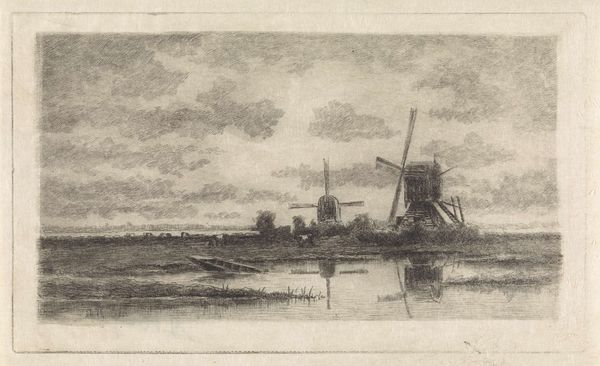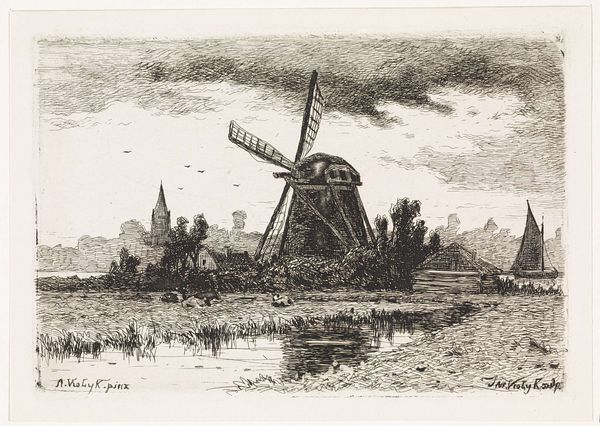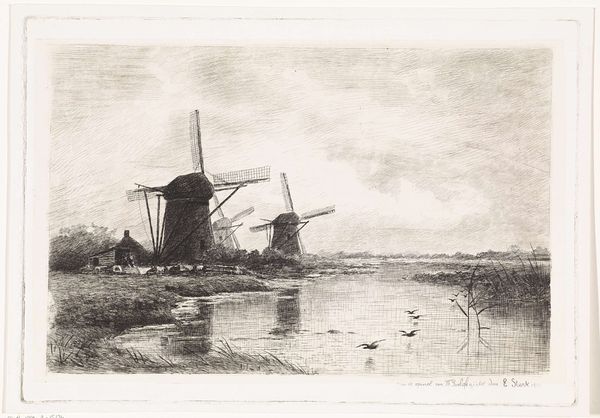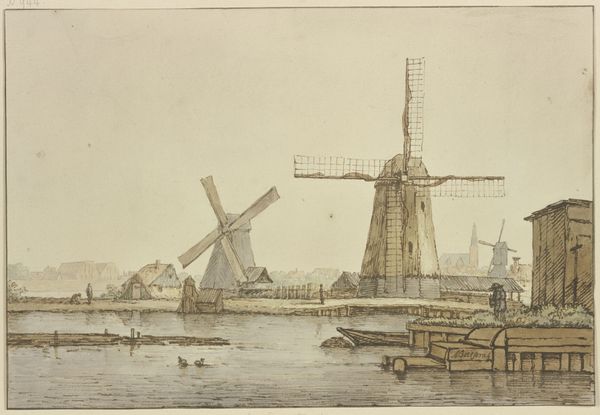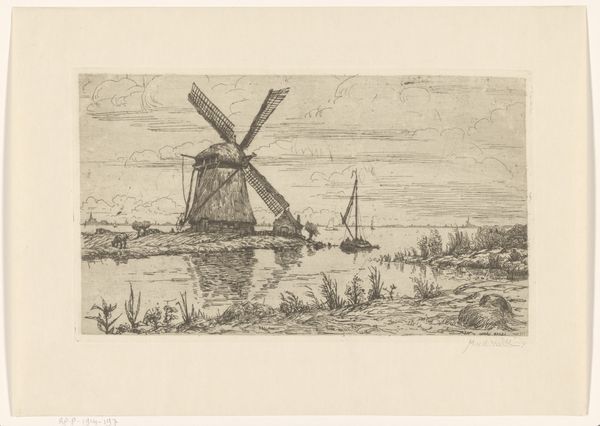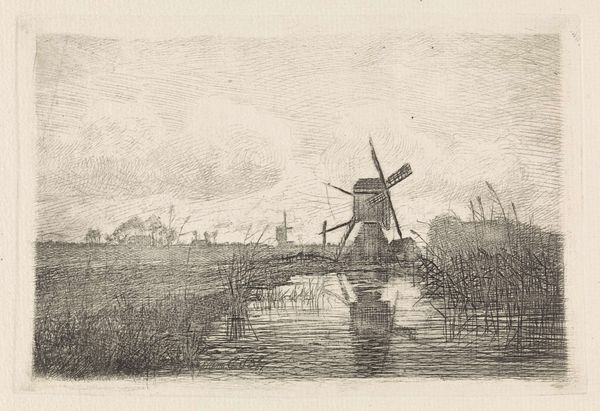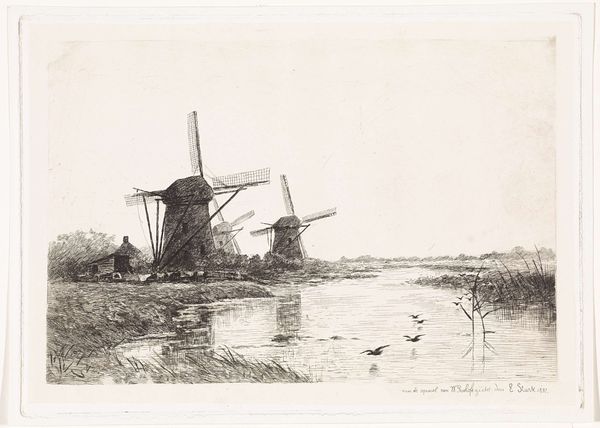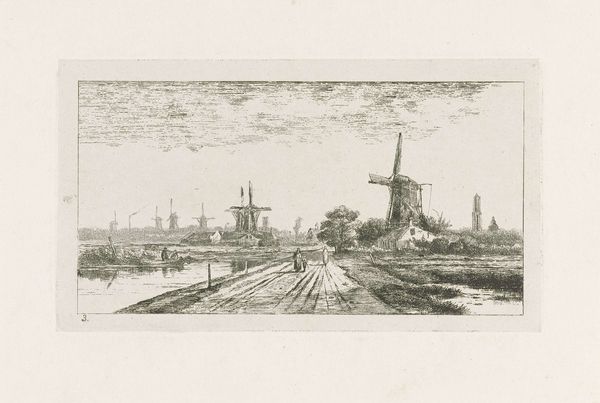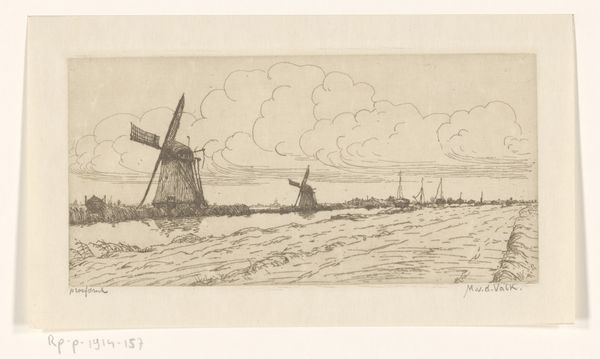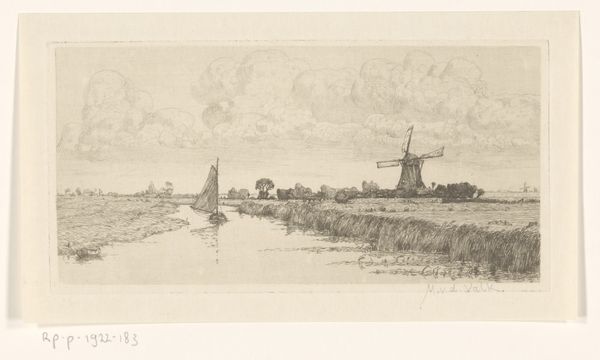
#
light pencil work
#
quirky sketch
#
pencil sketch
#
incomplete sketchy
#
etching
#
personal sketchbook
#
pen-ink sketch
#
sketchbook drawing
#
sketchbook art
#
fantasy sketch
Dimensions: height 231 mm, width 326 mm
Copyright: Rijks Museum: Open Domain
Eberhard Cornelis Rahms made this etching of windmills at Willeskop in the Netherlands. The cultural significance of windmills in 19th century Holland is immense. These structures were not just machines; they were symbols of Dutch ingenuity and the ongoing battle against the sea. Windmills like these shaped the landscape and the economy. They were crucial for drainage, allowing the Dutch to reclaim and cultivate low-lying areas. They also powered industries like milling grain and sawing wood. The presence of windmills often dictated settlement patterns and trade routes. In a way, they were essential for Dutch survival and prosperity. The precise lines of the etching highlight the relationship between the Dutch and their environment, which you can research further in archives and historical societies. Recognizing this context allows us to interpret the artwork not only as a landscape, but as a visual document of a culture defined by its relationship with nature and technology.
Comments
No comments
Be the first to comment and join the conversation on the ultimate creative platform.


